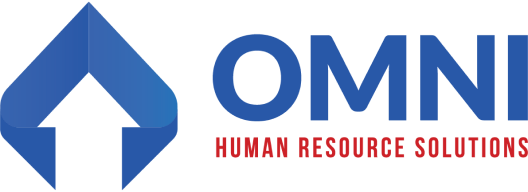In today’s fast-paced business world, setting clear and achievable goals is essential for driving employee performance and organizational success. One of the most effective frameworks for goal setting is the SMART acronym, which stands for Specific, Measurable, Achievable, Relevant, and Time-bound.
Organizations can elevate goal setting with SMART-ER goals, expanding the acronym to include Engaging and Rewarding, to foster a culture of accountability, motivation, and continuous improvement.
Understanding SMART-ER Goals
SMART-ER goals provide a structured approach to setting both challenging and attainable objectives. Here’s a breakdown of each component:
- Specific: Goals should be clear and well-defined, avoiding vague or ambiguous language. Great goals also include the “how” along with the “what.” Instead of saying, “I want to improve my sales performance,” a more specific goal might be, “Increase monthly sales revenue by 15% within the next quarter by focusing more time on identifying qualifying prospects.”
- Measurable: Goals should be quantifiable with specific metrics. This helps track progress and determine whether employees are on track to achieve their objectives. For example, instead of saying, “I want to be a better team player,” they could set a goal to “Increase the number of successful team collaborations by 20%.”
- Achievable: While goals should be challenging, they should also be realistic and attainable given available resources, skills, and time constraints. Setting overly ambitious goals can lead to frustration and decreased motivation.
- Relevant: Goals should align with your organization’s overall objectives and contribute to the employees’ professional development. The goals should also be consistent with the employee’s job responsibilities, and they should be meaningful and support the broader ambitions of the team or department.
- Time-bound: Setting a specific deadline for goals creates a sense of urgency and helps employees stay focused. For example, instead of saying, “I want to improve my communication skills,” a goal could be set to “Complete a communication skills training course by the end of the month.”
- Energizing: Set goals that align with the employee’s interests and development plans. This engages employees with a heightened desire to achieve the goal. For example, an employee passionate about digital marketing might set a goal to “launch a company-wide social media campaign that increases engagement by 25% within six months.”
- Rewarding: Encourage goal achievement through a regular process of recognition and rewards. For instance, after an employee meets or exceeds their target of “reducing project completion time by 10% over the next quarter,” offer public recognition, a bonus, or a professional development opportunity.
Keep Reading: Future-Proofing HR: 10 Trends Reshaping Work in 2024
Benefits of Using SMART-ER Goals in Performance Management
By setting SMART-ER goals, you can reap numerous benefits, including:
- Increased focus and motivation: When employees have clear and achievable goals, they’re more likely to stay focused and motivated.
- Enhanced productivity: SMART-ER goals provide a roadmap for success, helping employees prioritize tasks and allocate their time effectively.
- Improved employee development: Setting and achieving goals can help employees identify areas for growth and development, leading to increased skills and knowledge.
- Enhanced alignment with organizational goals: When employees set SMART-ER goals that are aligned with the organization’s objectives, it ensures that their efforts contribute to the overall success of the business.

How to Set SMART-ER Goals
- Identify key performance areas: Determine the critical areas where employee performance needs to be improved or enhanced and where the performance directly ties to department or organizational goals.
- Involve employees: Work with employees to set their goals collaboratively, ensuring they are invested in the process.
- Use the SMART-ER framework: Ensure that the goals you set are Specific, Measurable, Achievable, Relevant, Time-bound, Energizing, and Rewarding.
- Break down goals into smaller steps: Divide larger goals into smaller, more manageable milestones to make progress more attainable. This is particularly helpful in goals that stretch over several quarters. Look for ways to break it into monthly steps and goals.
- Regularly review and adjust: Monitor progress towards goals and make adjustments as needed to ensure they remain relevant and achievable.
Keep Reading: Using AI Responsibly: What Leaders Need to Know
Example of a SMART-ER Goal
Goal: Increase sales revenue by 20% in the next quarter.
- Specific: Increase sales revenue for Product X by 20% in the next quarter by utilizing the new sales management tool.
- Measurable: The goal is quantifiable with a specific percentage increase.
- Achievable: The goal is challenging but achievable based on past performance and market conditions.
- Relevant: The goal aligns with the organization’s overall revenue targets.
- Time-bound: The goal has a specific deadline of the next quarter.
- Engaging: This employee is motivated to move into a sales management role and needs to be proficient using the sales management tools.
- Rewarding: Successful sales result in commission payments.
Work with OMNI to Establish SMART-ER Goals That Lead to a Better Workplace
By fostering a culture of goal setting and performance management, you can create a positive and productive work environment where employees feel empowered to contribute to the organization’s success. Remember, SMART-ER goals are not just about achieving specific outcomes—they also develop employees, encourage a growth mindset, and create a thriving workplace.
At OMNI, we specialize in developing tailored performance management solutions that drive employee engagement and productivity.
Ready to get started? Call OMNI HR now or complete this contact form.

